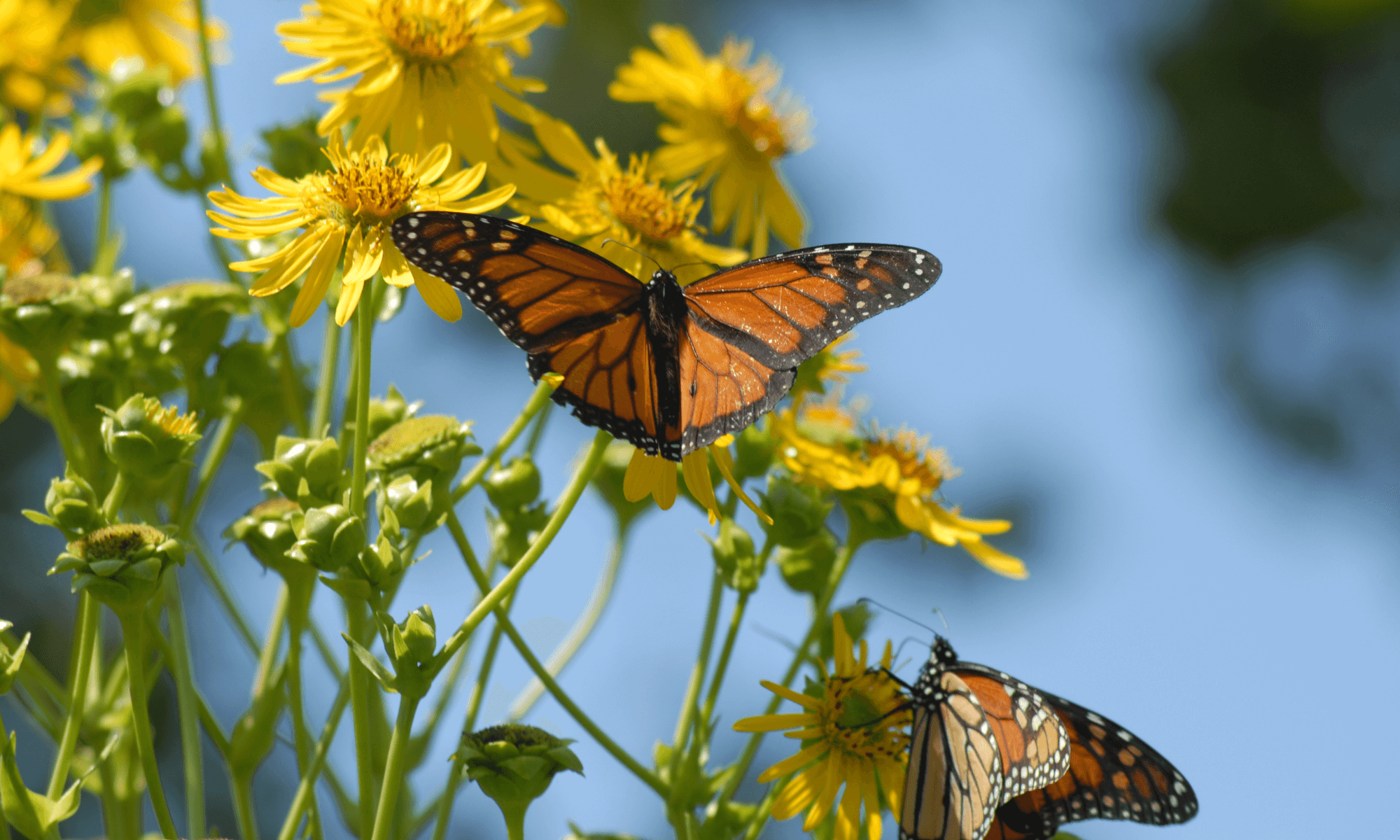How to Make a Butterfly Garden
Four Ways to Attract Butterflies
Published on May 2nd, 2022

Can you imagine summer without colourful butterflies fluttering past? As our urban areas become more crowded, we remove their food and habitat. As we add chemicals to the environment, we poison these beautiful creatures that would otherwise help to pollinate our crops. In fact, 450 butterfly species have been steadily declining since 1972, and some have gone extinct (National Geographic 2021).
Your yard and garden can be a haven for struggling butterfly populations.
Food
Did you know that butterflies taste with their feet? They are very particular about what they eat and seem to prefer the sweet nectar in the flowers of these plants:
• Herbs: chives, dill, fennel, rosemary, lavender, lemon balm, marjoram, oregano, sage, and thyme
• Fruits: strawberries, blueberries, blackberries
• Ornamentals: bee balm, black-eyed Susan, bluebells, Canada goldenrod, cornflower, daisy, evening primrose, hollyhock, New England aster, Douglas aster, Kinnikinnick, low Oregon grape, red columbine, sea holly, snapdragon, sunflowers, yarrow
On hot days, keep your plants well-watered to aid in nectar production. In addition to butterflies, hummingbirds might dart in for a sip.
Habitat
Many species of butterflies live only a few weeks; before their time is up, females lay their eggs on the underside of leaves. As with their food, butterflies are particular about the nursery they choose for their young.
Consider growing some of these host plants (David Suzuki 2022) in the corner of your yard and skip the autumn clean-up; sometimes, keeping a messy garden is the best thing you can do for nature.
• Pacific bleeding heart Dicentra Formosa
• Oceanspray Holodiscus discolor
• Pacific Willow Salix lucida (Pacifica)
• Chokecherry Prunus virginiana
• Pacific ninebark Physocarpus capitatus
• Cottonwood Populus trichocarpa
• Stinging nettle (native) Urtica dioica ssp gracilis
• Saskatoon serviceberry Amelanchier alnifolia
• Hardhack (rose spirea) Spiraea douglasii
• Showy milkweed Asclepias speciosa
Milkweed
Monarch butterflies famously fly from Canada to Mexico each winter. They pollinate wildflowers and become an important food source for birds, small animals, and other insects. You might not know that female monarchs need to lay their eggs on milkweed plants. When an egg hatches into a caterpillar, it feeds on the milkweed leaves, containing toxins that remain permanently in the creature’s system, even after it metamorphoses into a butterfly. Predators who eat monarch butterflies become very sick and, thereafter, avoid this distinctively patterned butterfly (National Park Service 2022). Milkweed is essential to the survival of monarch butterflies.
Water
Butterflies (and bees) require water on hot summer days, but their wings can easily get wet, causing the insects to drown. They need a dry platform from which to take a drink. Here is a safe solution:
• Pour water into an old ceramic plate.
• Place a few stones on the plate (the stones should partially stick out of the water).
• Replace the water every few days to eliminate mosquito larvae.
Avoid Pesticides
Pesticides are harmful to butterflies and many other creatures, including pets and young children. While it is easy to avoid applying chemicals on your property, you may not realize that they are often sprayed onto nursery seedlings. Try growing your plants from seed. You will save money in the long run because each summer, butterflies and bees will pollinate your plants so that you will have more seeds for the following year.
If you find that aphids or other pests are damaging your plants, simply try planting something else. The soil composition and light in your garden may not be suitable for one plant, yet another will thrive. It might take a few tries to discover what works best in your situation.
With a few minor changes, your yard and garden will help to preserve one of nature’s wonders.
Sources:
David Suzuki Foundation. Accessed April 2022. “How to create a butterfly garden.” https://davidsuzuki.org/living-green/how-to-create-a-butterfly-garden.
National Geographic. March 4, 2021. https://www.nationalgeographic.com/animals/article/butterflies-declining-due-to-warmer-autumns-in-western-united-states.
National Park Service. Accessed April 2022. “Pollinators - Monarch butterfly.” https://www.nps.gov/articles/monarch-butterfly.htm.
Powered by Froala Editor